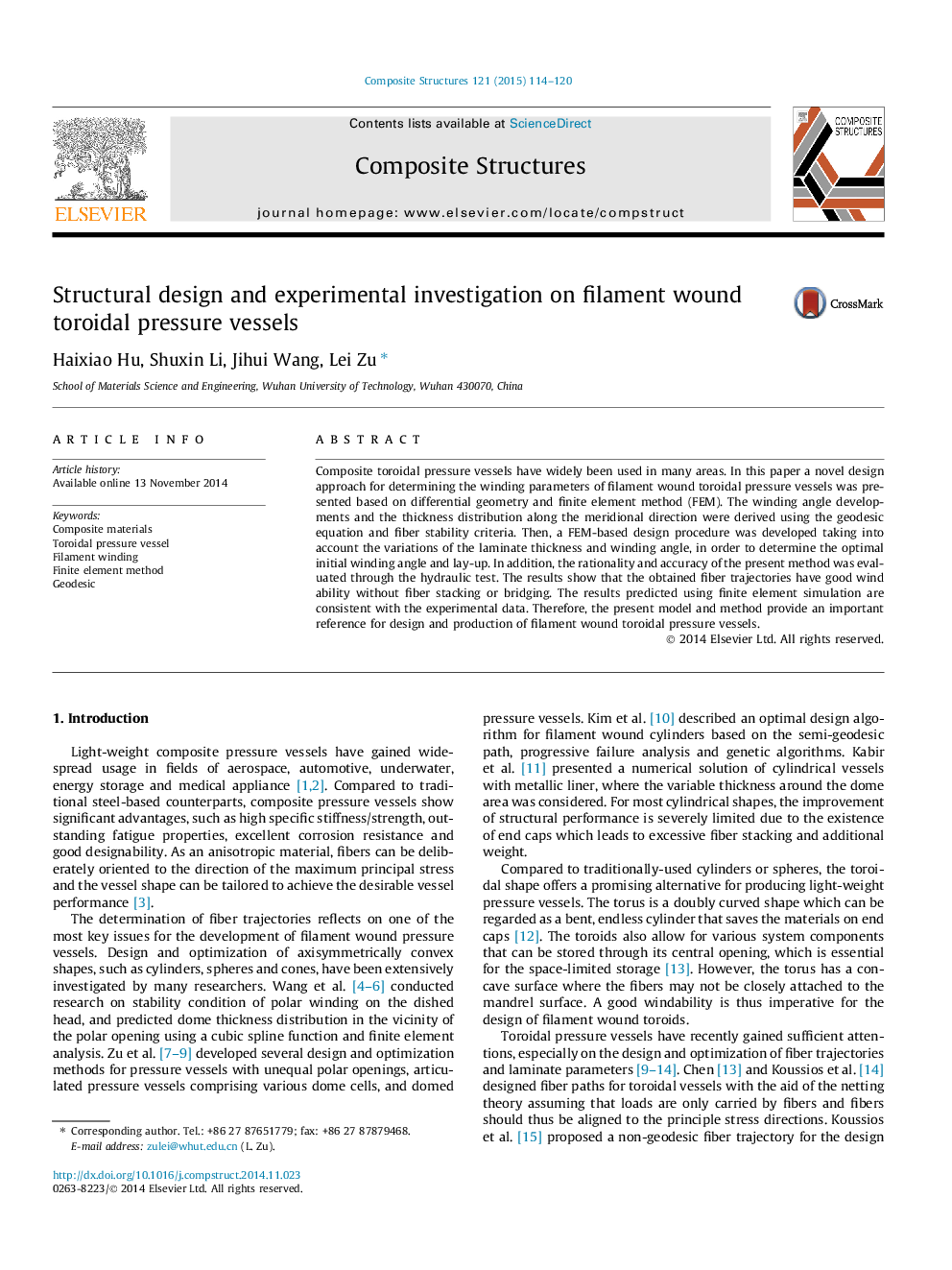| Article ID | Journal | Published Year | Pages | File Type |
|---|---|---|---|---|
| 251314 | Composite Structures | 2015 | 7 Pages |
Composite toroidal pressure vessels have widely been used in many areas. In this paper a novel design approach for determining the winding parameters of filament wound toroidal pressure vessels was presented based on differential geometry and finite element method (FEM). The winding angle developments and the thickness distribution along the meridional direction were derived using the geodesic equation and fiber stability criteria. Then, a FEM-based design procedure was developed taking into account the variations of the laminate thickness and winding angle, in order to determine the optimal initial winding angle and lay-up. In addition, the rationality and accuracy of the present method was evaluated through the hydraulic test. The results show that the obtained fiber trajectories have good wind ability without fiber stacking or bridging. The results predicted using finite element simulation are consistent with the experimental data. Therefore, the present model and method provide an important reference for design and production of filament wound toroidal pressure vessels.
